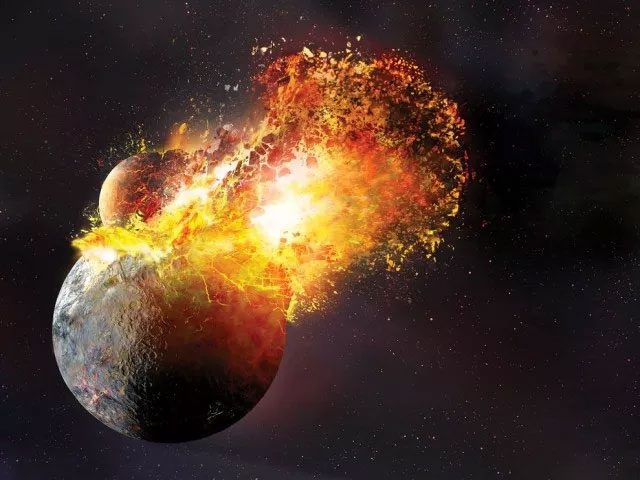The Ultra-Low Velocity Zone (ULVZ) is a peculiar area deep within the Earth, near the core, where seismic waves slow down inexplicably as they pass through. Planetary scientists have been trying to explain what it is for many years.

Hypothetical collision between Earth and Theia – (Image: New Scientist).
Geophysicist Surya Pachhai from the Australian National University, a member of the research team, stated that their new models suggest that the ULVZ may consist of a chemically heterogeneous region compared to other parts of the area near the core, originating from the early period in Earth’s history.
According to Science Alert, it is the collision between Earth and the hypothetical planet Theia, which is increasingly supported by evidence suggesting it actually occurred. Theia, about the size of Mars, collided violently with early Earth, mixing materials into it. Some of the debris from the explosion was ejected into Earth’s orbit and eventually coalesced to form the Moon over time.
In the new study, the authors ran hundreds of thousands of computer simulations, using a process called “Bayesian inversion” to retrieve the lost part of history and then compared it with real data captured from beneath the Coral Sea between Australia and New Zealand.
They realized that the ULVZ could be a portion of anomalous material from the hypothetical planet Theia, which has not yet been evenly mixed with Earth’s materials. The collision even formed a hot, molten magma ocean with a distinct chemical composition, which then sank deep into the Earth and became part of the mysterious ULVZ world.
This aligns well with the earlier popular hypothesis that the ULVZ is molten magma resulting from some regions of the mantle melting in an inexplicable manner.
The study was recently published in Nature Geoscience.





















































